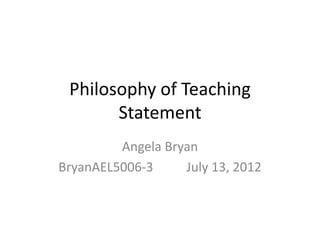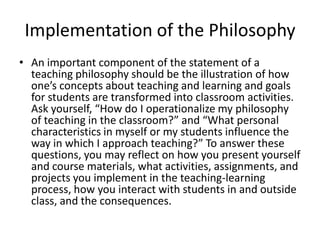This document provides guidance for developing a teaching philosophy statement focused on adult learning in an online environment. It discusses key concepts in adult learning theory, such as the five issues addressed in andragogy. The document outlines the recommended sections to include in a teaching philosophy statement: conceptualization of learning, conceptualization of teaching, goals for students, implementation of the philosophy, and a professional growth plan. Specific questions are provided for each section to help articulate beliefs about adult learning and teaching approach.











